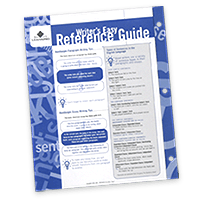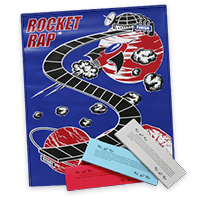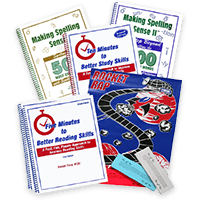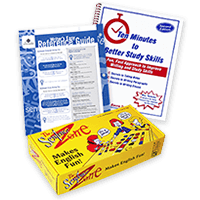Comprehension gains are directly correlated to vocabulary instruction.
Using keywords or highlighted words and defining them increased comprehension of textbooks. Playing with words also increases vocabulary.
According to Baker, Simmons, and Kame’enui, (1997) vocabulary is a strong indicator of student success. When students fail, it is often due to a lack of word knowledge, vocabulary. Research from Beck and McKeown, & Kucan, (2002) states that there are three specific tiers of vocabulary.
Tier 1 consists of basic vocabulary such as the most frequently used words.
Tier 2 vocabulary contains consist of more difficult words that are used frequently in everyday life. These are words like coincidence, industrious, masterpiece. When you don’t experience these types of words in your everyday life, your vocabulary word /ban/ suffers as does your factual knowledge base. Additionally, Tier 2 words are words that have multiple meanings. They can be used in a variety of subject areas. These are words that make a huge difference in your ability to comprehend what you read. They often are descriptive words that add detail.
Tier 3 words are used less frequently. These are words that are typically used in specific subjects such as math, science, medical, or legal terms. These words are too specific to be taught outside of their specific areas.
There are specific steps to teaching vocabulary.
Studies from Sprenger, (2005 and 2010); Payne (2009); and Snowdon, (2001) suggest the following ways to teach new vocabulary:
- Use a story to model what the word means.
- Use the new word in a story or example that they have made up.
- Draw a picture or doodle a picture of what the words means.
- Write the new word in a vocabulary notebook, keep your story example and picture with it.
- Engage in conversations using the new word every day for 5-10 days.
- Play games with the words.
A Review of the Current Research on Vocabulary Instruction
Additionally, questioning and language engagement is critical. The scaffolding of questions from low to high demand promotes greater gains in word learning. Blewitt, Rump, Shealy,& Cook (2009).
With the science of neuro-plasticity we do know that the brain has the ability to change and form lasting memories. Doidge, (2007) Teaching vocabulary can make a dramatic difference in one’s success.
Biemiller & Boote (2006) a gain of 22% to 41% in word meaning was found. In this study a substantial number of word meanings were taught using repeated oral reading of stories combined with explanations of words. The researchers suggest that teaching 400 word meanings per year is a reasonable goal.
Cain (2007) All students improved in the quality of their word definitions, but the greatest gains were made when children explained their own definitions or the experimenter’s correct definition. This study found that explanation is a useful instructional technique that facilitates children’s ability to derive word meanings from context
Overview of Reading and Literacy Initiatives
Statement
of Dr. G. Reid Lyon to Congressional Committee on Labor and Human Resources
This article goes into detail on understanding how sounds are connected to print (phonemic awareness and phonics – the alphabetic principle). When children cannot perceive the sounds in spoken words such as the ‘at’ in the word ‘cat’ and ‘sat’, they will have difficulty sounding out words. Additionally, you need to be able to do this quickly in order to gain meaning from what you have read (fluency). When you don’t read quickly enough you lose the meaning (comprehension) of what you have read. All of this skills need to be fostered.
Learning to read actually starts long before children enter school. Children who are read to frequently at young ages typically develop phonemic awareness and the alphabetic principle earlier and be better equipped to learn to read.
Again, the principles spoken about to the Congressional Committee on Labor and Human Resources goes through the research and concurs that phonemic awareness, phonics, fluency, vocabulary, and comprehension are the critical components of reading.
Each of these components is taught with: Making Spelling Sense, Making. Spelling Sense II, Five Minutes to Better Reading Skills, as well as the ASW Spelling and Phonics program, the ASW Reading Fluency Program, ASW VAK Program, and the ASW Premium Program use these methods Ten Minutes to Better Study Skills, The Comprehension Zone, The Sentence Zone, ASW Reading, Writing, and Study Skills Program, ASW Writing Program, the ASW Premium Program.



















